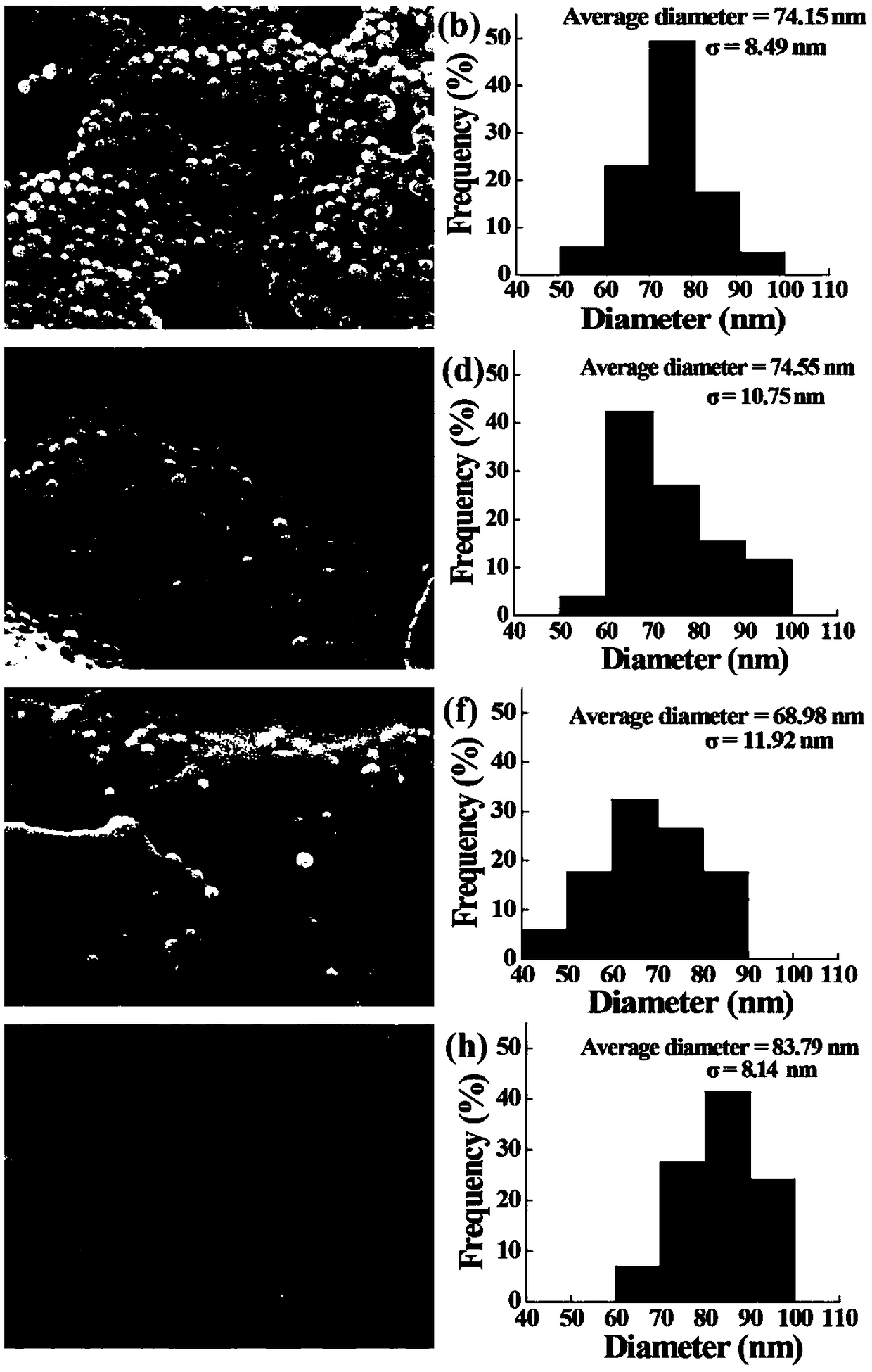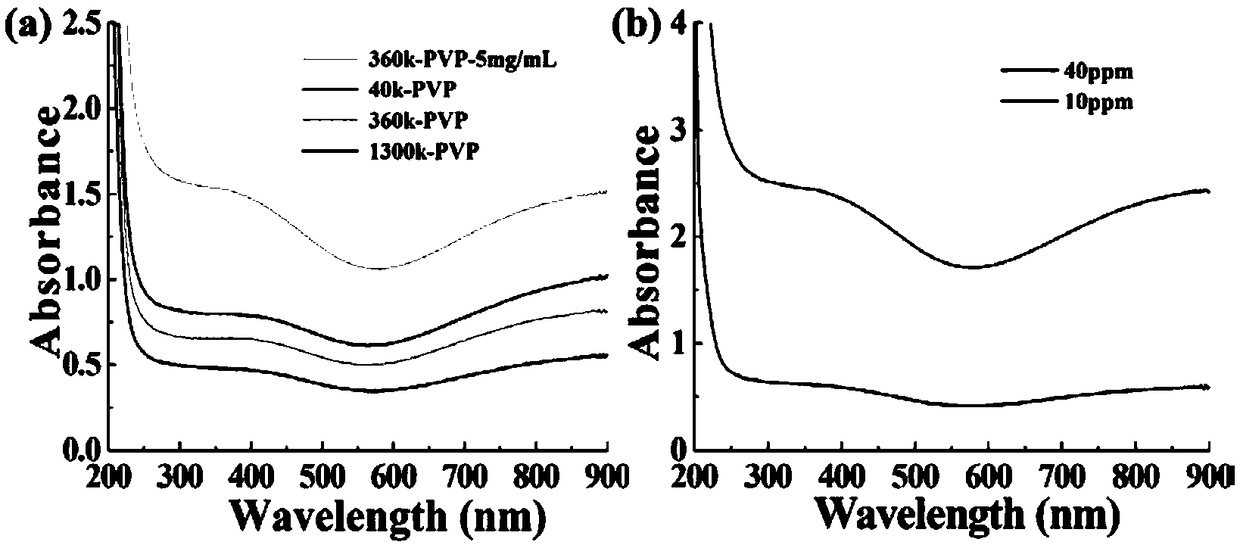Polypyrrole-polyvinylpyrrolidone nanoparticles and preparation method and application thereof
A polyvinylpyrrolidone and polypyrrole nanotechnology, applied in the field of materials science, can solve the problems of difficult metabolism of copper sulfide nanoparticles, low light absorption coefficient of carbon materials, low light-to-heat conversion efficiency, etc., and achieve good blood compatibility and biological Compatibility, simple and easy preparation method, remarkable effect of technological progress
- Summary
- Abstract
- Description
- Claims
- Application Information
AI Technical Summary
Problems solved by technology
Method used
Image
Examples
Embodiment 1
[0040] Add PVP with a molecular weight of 40kDa and a concentration of 25mg / mL to distilled water, stir to dissolve and add 2.48g of FeCl 3 ·6H 2 O. At a temperature of 4°C, pyrrole was added to react for 4h. The resulting solution was centrifuged and washed to obtain PPy-PVP 40kDa Nanoparticles ( figure 1 a,b). Use Image J 1.40G software to measure the diameter of nanoparticles (measure at least 50), PPy-PVP 40kDa The diameter of the nanoparticles is 74.15nm, PVP 40kDa The addition of effectively improved the colloidal stability of PPy nanoparticles ( figure 2 a, b).
Embodiment 2
[0042] Add PVP with a molecular weight of 360kDa and a concentration of 25mg / mL to distilled water, stir to dissolve and add 2.48g of FeCl 3 ·6H 2 O. At a temperature of 4°C, pyrrole was added to react for 4h. The resulting solution was centrifuged and washed to obtain PPy-PVP 360kDa Nanoparticles ( figure 1c, d). Use Image J 1.40G software to measure the diameter of nanoparticles (measure at least 50), PPy-PVP 360kDa The particle size of nanoparticles is 74.55nm, PVP 360kDa The addition of effectively improved the colloidal stability of PPy nanoparticles ( figure 2 c, d).
Embodiment 3
[0044] Add PVP with a molecular weight of 1300kDa and a concentration of 25mg / mL to distilled water, stir to dissolve and add 2.48g of FeCl 3 ·6H 2 O. At a temperature of 4°C, pyrrole was added to react for 4h. The resulting solution was centrifuged and washed to obtain PPy-PVP 1300kDa Nanoparticles ( figure 1 e, f). Use Image J 1.40G software to measure the diameter of nanoparticles (measure at least 50), PPy-PVP 1300kDa The particle size of nanoparticles is 68.98nm, PVP 1300kDa The addition of effectively improved the colloidal stability of PPy nanoparticles ( figure 2 e, f).
PUM
| Property | Measurement | Unit |
|---|---|---|
| molecular weight | aaaaa | aaaaa |
| concentration | aaaaa | aaaaa |
| molecular weight | aaaaa | aaaaa |
Abstract
Description
Claims
Application Information
 Login to View More
Login to View More - R&D
- Intellectual Property
- Life Sciences
- Materials
- Tech Scout
- Unparalleled Data Quality
- Higher Quality Content
- 60% Fewer Hallucinations
Browse by: Latest US Patents, China's latest patents, Technical Efficacy Thesaurus, Application Domain, Technology Topic, Popular Technical Reports.
© 2025 PatSnap. All rights reserved.Legal|Privacy policy|Modern Slavery Act Transparency Statement|Sitemap|About US| Contact US: help@patsnap.com



